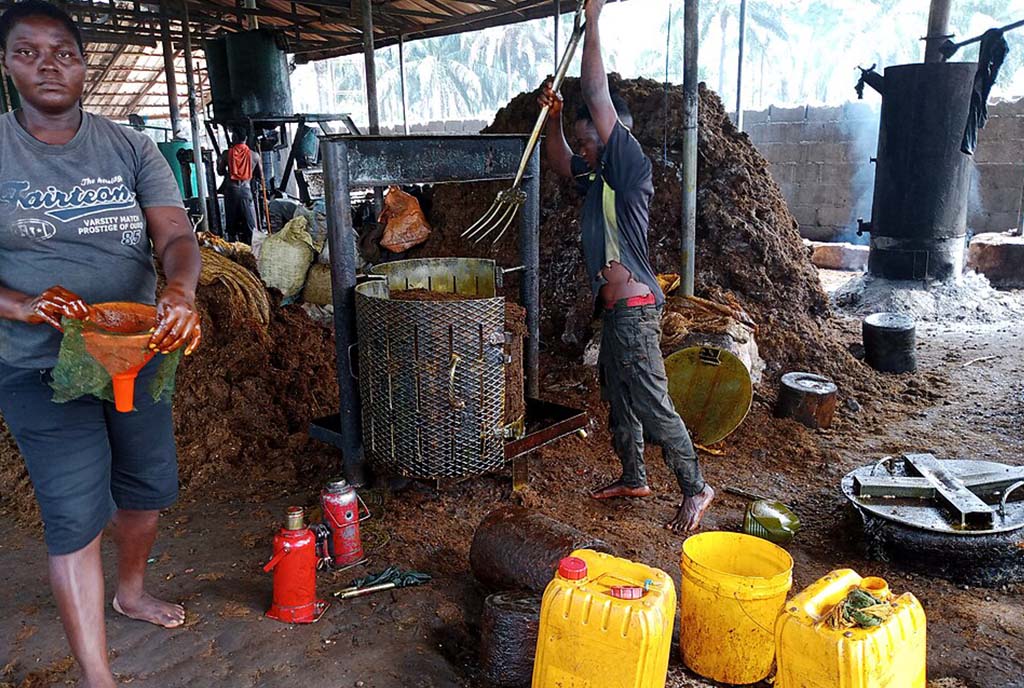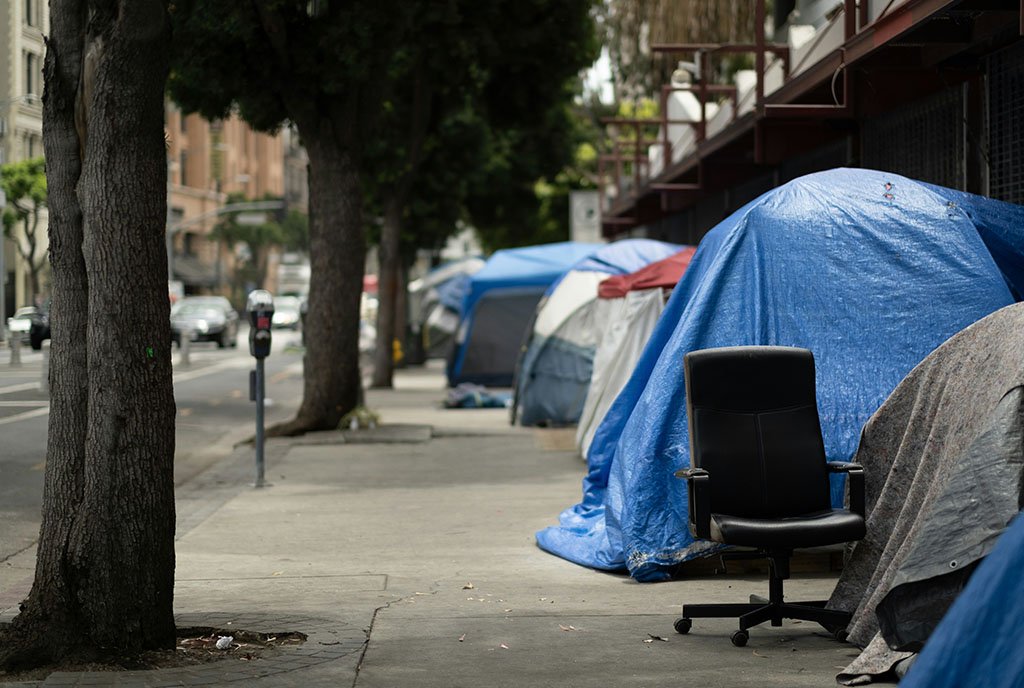
A recent article in NPQ was titled “Climate Change Can Only Be Achieved if There is Racial Justice.” In that article, it was pointed out that, contrary to media stereotypes, support for pro-environmental policies is higher among people of color than among whites.
As marine biologist Ayana Elizabeth Johnson writes in a Washington Post op-ed, climate change support is 57 percent among Black people and 70 percent among Latinx people, compared to 49 percent for whites. Yet, she adds, “Black Americans who are already committed to working on climate solutions still have to live in America, brutalized by institutions of the state, constantly pummeled with images, words, and actions showing us just how many of our fellow citizens do not, in fact, believe that Black lives matter.” Johnson’s point is clear: It is impossible to make progress on stated environmental mission goals absent racial equity.
The point seems obvious. But despite progress here and there, a significant shift in favor of racial equity in Big Green has not occurred, even as countless studies show that organizations that look like America enjoy increased innovation and improved performance.
National data on the social, environmental, and physical determinants of health show that a lack of equity causes people of color grievous harm. Distinguished researchers pinpoint parallels in the lack of racial diversity in Big Green environmental and conservation nonprofits, and the underrepresentation of people of color on boards and in the leadership. People of different identities, cultures, faiths, ages, and abilities also grapple with inequities.
Rooting out racism is an onramp to protections against the hazards of sexism, heterosexism, and ableism. The US civil rights movement exemplifies the drive for racial justice, paving the way for improvements for many vulnerable groups, including women, LGBTQIA+ and immigrants. Inculcating equity is at the heart of the issue. We saw this again, earlier this month, when the US Supreme Court found in Bostock v. Clayton County, Georgia that employer discrimination against LGBTQIA+ individuals was prohibited by the language of the 1964 Civil Rights Act.
In the wake of the murders of George Floyd, Breonna Taylor, Ahmaud Arbery, and so many others, we’ve seen racial equity statements from many in Big Green, including the Sierra Club, Audubon, and the World Wildlife Fund. But statements are just a starting point. Action is key.
Similar to government, business, and the rest of the nonprofit sector, but perhaps with even greater intensity, the future and vitality of environmental and conservation nonprofits depends on applying an equity lens to management systems and processes. This requires embedding equity and inclusion as a core practice.
Changing White Spaces
There is an alienating web of conditions in the nonprofit sector perpetuating the reputation that these organizations are white spaces. For Big Green nonprofits, steering strategies toward a more equitable and inclusive blueprint for protecting the planet is vital. The starting point for the culture shifts that will promote fairness and inclusion is understanding what the barriers are and the ways they tie into an organization’s operations and decisions. Equity, in short, is a critical platform for systems change and inclusion.
Equity harnesses diverse forces and resources in ways that are beneficial for disadvantaged people and groups and, ultimately, beneficial for everyone—and the planet. Inclusion creates organizational value by corralling the richness of different experiences, backgrounds, and perspectives. These synergistic principles are indispensable to valuing and retaining racial and cultural diversity in the environmental and conservation field. These values need to be embedded in all aspects of operations, from policy advocacy, to who sits on boards and holds executive positions, to staff management, and to partnership formation.
Microaggressions, one tangle in the snarl of inequities, reinforce white advantage in the green nonprofit sector. Harvard psychiatrist Dr. Chester Pierce coined the term to describe racially charged “subtle blows…delivered incessantly.” Microaggression commonly is discussed from the perspective of race, but any marginalized group in society can be a target—people of color, women, LGBTQ persons, those with disabilities, religious minorities, and more. Tackling these behaviors does not minimize violence, redlining, the wealth gap, or other forms of overt racism or blatant manifestations of discrimination. Nonetheless, microaggression is both a cause and symptom of the intertwined systemic and structural organizational problems endemic to predominantly white institutions.
To some, the more subtle discriminatory behaviors inside Big Green groups might seem less serious or harmful than flagrant racism or racialized outcomes. However, microaggression triggers significant physical and psychological effects and contributes to substantial racial disparities in employment, education, and healthcare. Battle fatigue from this type of hostility is toxic, wears people down, and is often cited as a principal reason for leaving a job.
Dr. Roberto Montenegro, a psychiatry fellow at Seattle Children’s Hospital who studies the biological effects of discrimination, puts it this way: “A lot of people hear ‘microaggressions’ and they think, ‘Oh, it’s just the little things that hurt people’s feelings.’ It isn’t about having your feelings hurt. It’s about how being repeatedly dismissed and alienated and insulted and invalidated reinforces the differences in power and privilege, and how this perpetuates racism and discrimination.” Studies of African Americans corroborate devastating cumulative effects resulting in a negative racial climate and emotions of self-doubt, depression, frustration, and isolation.
Microaggression can be intentional or may result from unintentional unconscious or implicit bias. Awareness is important. However, the unconscious and unintentional aspects usually are overhyped. That said, lack of consciousness does not connote innocence; it is not innocuous, nor does it mean you’re off the hook for bad behavior or consequences. Furthermore, the effects are not so “micro” in the aggregate.
What You Say?
Since white men make up most of the top leadership in the US-based environmental and conservation movement, white male hegemony sets the stage for flourishing microaggressions. Consistent with Dr. Dorceta Taylor’s groundbreaking study about diversity in Big Green, explicit and implicit bias encumbers efforts to shift systems and organization culture, but shift they must.
Women’s leadership is another dimension for equity and inclusion. Research shows women in green groups occupy junior positions and fewer senior positions, such as executive directors, and white women fill more senior leadership roles than women of color who, analogous with nonprofit sector data, also are navigating racial inequalities.
Of course, people are not homogenous, so equity strategies for creating inclusive spaces will need to vary. Women of color, queer, transgender and non-binary people and immigrants of color, for instance, tackle interdependent systems of relegation called intersectionality. Merriam-Webster’s says it is “the complex, cumulative way, in which the effects of multiple forms of the discrimination combine, overlap, or intersect especially in the experiences of marginalized individuals or groups.”
The chart below captures some viewpoints shared by people working in environmental and conservation spaces about achieving inclusion, the disconnecting experience of microaggressions, and their perspectives about doubling down on making the green “big tent” welcoming for all.
| Context | Microaggression |
|
Environmental
|
People of color, gender and sexual minorities, women, people of faith, Dreamers, and immigrants feel anxious and uncertain in the face of disproportionate police brutality, killings of unarmed Black and Brown citizens, gun violence, mass shootings, and attacks on religious places. People of color view inclusion as acknowledging traumas and broadening knowledge and communications concerning the racial and cultural context of communities most harmed. |
|
Racism
|
People of color feel invalidated, their intelligence subordinated, when they hear “I don’t see color” or “you are so articulate,” when they experience gaslighting, or are inexplicably called by the name of someone else of color. People of color seek leadership roles; racial equity skills-building across their organization; adoption of inclusive systems-change strategies; and actions that factor in race to remodel systems, operations, policies and practices, data collection, training, metrics and accountability. |
Sign up for our free newslettersSubscribe to NPQ's newsletters to have our top stories delivered directly to your inbox. By signing up, you agree to our privacy policy and terms of use, and to receive messages from NPQ and our partners. Sexism
|
Women feel worried after being called “bossy,” “difficult,” or abrasive while doing their jobs when these words are not used to describe men who do the same things, and when they experience mansplaining, unasked-for explanations, being talked over and interrupted. Women seek gender equity, supportive safe spaces, open conversations, leadership roles, and actions that advance professional development. Women of color call for inclusive dialogues and acknowledgement about intersectionality effects and allyship. |
|
Heterosexism
|
People who are LGBTQIA+ express alienation after being misgendered, and when words like “regular” or “normal” are communicated, implying that cisgender people are superior and everyone else is abnormal. Heteronormative culture, embedded biases, and state laws that allow discrimination compound these feelings of uncertainty. People who are LGBTQIA+ seek an inclusive culture of safety and freedom to contribute and be themselves facilitated by gender neutrality, training that addresses language, and supportive policies and practices. |
|
Ableism |
People with disabilities feel obstructed when there are barriers to accessibility, opportunities, and outdoor experiences. People with disabilities want to tackle inclusion with education about ableist beliefs and practices that devalue people with physical, intellectual, or psychiatric disabilities; removing physical and communications barriers; and addressing the lag in inclusion in nonprofit spaces. |
Flip the Script
The nonprofit Green 2.0 studies racial diversity. The group’s latest report, Leaking Talent: How People of Color are Pushed Out of Environmental Organizations, authored by Dr. Stefanie K. Johnson of the University of Colorado at Boulder, documents the need for leveling the playing field and deeper investments supporting multiracial and multicultural equity. The study shines a light on the experiences of staff of color currently or formerly working for environmental nonprofits and foundations.
Deloitte’s inclusion model for business is also instructive for Big Green nonprofits. In sum, systems must be rewired to tackle culture and bias. The first step is treating people equitably and respectfully, which means participation without favoritism and attention to nondiscrimination. Next, people must believe they are valued and have a sense of connectedness or belonging. This means they are safe to be themselves, to do their best work, and able to speak up without fear of retaliation or embarrassment. Inclusive leadership from executives and middle managers matters.
Here is my short list for cultivating inclusive, supportive, diverse spaces:
- Acknowledge the behavior’s damage.
- Deliver leadership and accountability.
- Invest in systems and culture change.
- Use data to pinpoint and address bias.
- Focus on organizational development.
- Learn, evaluate, measure, and adjust.
Supporting and encouraging the inclusion of racially and culturally diverse voices and viewpoints chips away at culture change and helps construct more welcoming spaces. Creating opportunities for dialogue and learning is fundamental. Affinity groups, for example, fulfill a critical organizational role by articulating, promoting, and supporting people’s interests, concerns, and goals. National Heritage Month celebrations are venues for speakers and activities that share knowledge and celebrate contributions to the American fabric across races, ethnicities and cultures. Board committees can expedite progress by helping management define a common vision for what inclusion means and embed that vision directly into the mission and business strategy.
These are some modest initial steps, but they are a start. To be truly transformative requires building on these action steps. It requires creating an environment at the workplace, where, as political consultant Wilnelia Rivera puts it, it is possible for leaders of color to stand in their power and “navigate and communicate from that space.” It is, in short, about changing organizational culture. Paying attention to microaggressions and altering the environment that makes those microaggressions seem acceptable is one step on this transformative path.
Equity and inclusion can become a win-win for the environmental and conservation movement. This won’t happen by itself, but it needs to happen, because the success of the environmental mission hinges on fairness, a more inclusive blueprint, and our ability to transform into more just organizations. For boards, executives, staff, and membership, Big Green’s resiliency and vitality require creating culture and spaces that attract, welcome, and value people from all walks of life.
References
American Psychological Association, Multicultural Guidelines: An Ecological Approach to Context, Identity, and Intersectionality. (2017)
Armstrong, M., Carlson, J., “Speaking of trauma: the race talk, the gun violence talk, and the racialization of gun trauma,” Palgrave Communications 5, 112. (2019)
Crenshaw, K., “Demarginalizing the Intersection of Race and Sex: A Black Feminist Critique of Antidiscrimination Doctrine, Feminist Theory and Antiracist Politics,” University of Chicago Legal Forum, Vol. 1989, Article 8. (1989).
Forestiere, A., “Ignoring the Intersectionality of Gun Violence,” Amicus, Legislation, LGBTQ Rights, Policing and Law Enforcement, Poverty and Economic Justice, Racial Justice, Second Amendment, Sex Equality, Harvard Civil Rights-Civil Liberties Law Review. (2019)
Jones, M.S., Solomon, J., “Challenges and Supports for Women Conservation Leaders,” Conservation Science and Practice. © 2019 The Authors, published by Wiley Periodicals, Inc. on behalf of Society for Conservation Biology. (2019)
Kattari, S.K., “The Development and Validation of the Ableist Microaggression Scale,” Journal of Social Service Research, 45:3, 400–417, DOI.
Nadal, K.L., “Microaggressions and Traumatic Stress: Theory, Research, and Clinical Treatment,” American Psychological Association. (2018)
Sarkis, S.A., “11 Warning Signs of Gaslighting: Gaslighting is a manipulation tactic used to gain power. And it works too well,” Psychology Today (2017)
Solorzano, D., Ceja, M., Yosso, T., “Critical Race Theory, Racial Microaggressions, and Campus Racial Climate: The Experiences of African American College Students,” Journal of Negro Education 69(1/2), 60. (2000).
Sue, D.W., Microaggressions in Everyday Life: Race, Gender, and Sexual Orientation, published by Wiley Periodicals, Inc. (2010)












